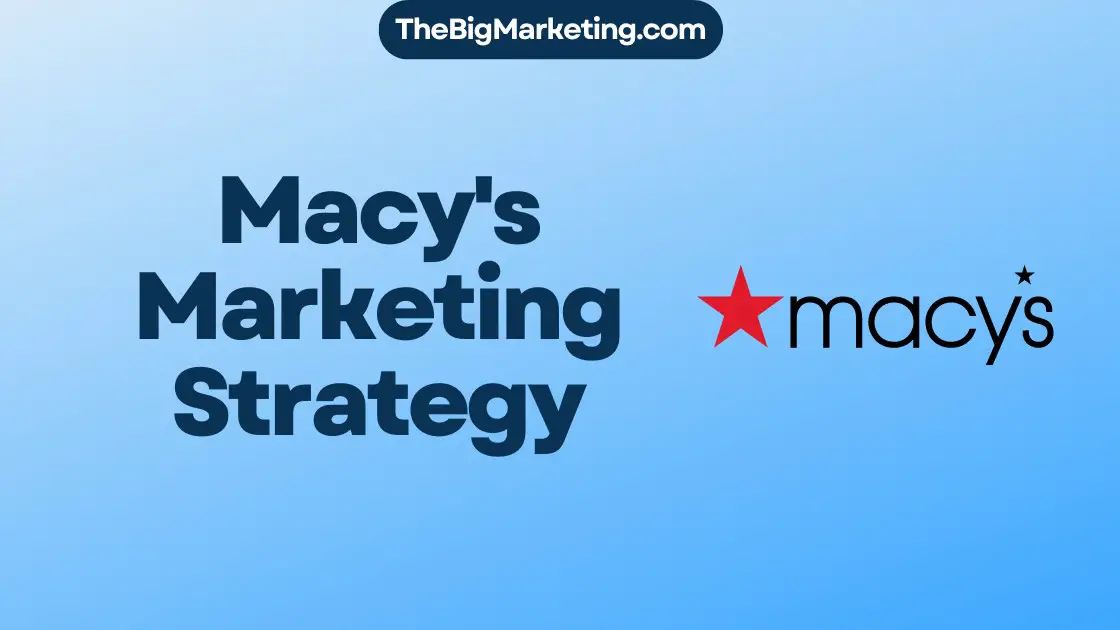Place utility plays a significant role in marketing, shaping the success of businesses and their ability to meet customer needs. But what exactly is place utility, and why is it important in marketing strategies? In this article, we will delve into the definition, role, strategies, and benefits of place utility in marketing. We will also explore examples of place utility in action and provide insights into how businesses can enhance place utility to drive customer satisfaction and increase their competitive advantage.
Key Takeaways:
- Place utility refers to making products or services easily accessible to consumers.
- It plays a crucial role in enhancing customer satisfaction, increasing sales, and driving earnings.
- Strategies to enhance place utility include optimizing transportation networks, strategic distribution center locations, and effective inventory management.
- Examples of place utility can be observed in retail store locations and online accessibility.
- Benefits of place utility include improved customer satisfaction, increased sales, and a competitive advantage.
The Four Types of Economic Utility
Economic utility refers to the overall satisfaction that consumers experience when using a product or service. This satisfaction can be broken down into four distinct types: form utility, time utility, place utility, and possession utility. Each type plays a role in ensuring that consumers derive maximum value from their purchases.
Form Utility
Form utility is the value that consumers derive from products or services that meet their specific needs. It focuses on the functionality, design, and features of a product. For example, a smartphone with advanced features and a user-friendly interface provides high form utility as it meets the needs and preferences of tech-savvy consumers.
Time Utility
Time utility involves providing goods and services to consumers when they need or demand them. It aims to reduce the wait time between the desire for a product and its availability. For instance, a company that offers 24/7 customer support provides time utility by ensuring that customers can access assistance at any time, increasing their satisfaction and loyalty.
Place Utility
Place utility focuses on making products or services easily accessible to consumers. It involves strategic distribution and retail locations that allow customers to find and purchase what they need conveniently. By ensuring that products are available in the right place at the right time, businesses can enhance customer satisfaction and increase sales.
Possession Utility
Possession utility refers to the perceived value a consumer gets from owning and being able to use a product or service in a timely manner. It encompasses factors such as warranties, customer support, and ease of use. For example, a company that offers hassle-free returns and a comprehensive warranty provides high possession utility, as it gives consumers peace of mind and confidence in their purchase.
Table: Comparing the Four Types of Economic Utility
| Economic Utility Type | Definition | Example |
|---|---|---|
| Form Utility | Value derived from products or services that meet specific needs | A smartphone with advanced features and a user-friendly interface |
| Time Utility | Providing goods and services when consumers need or demand them | A company offering 24/7 customer support |
| Place Utility | Making products or services easily accessible to consumers | Retail stores strategically located in high-traffic areas |
| Possession Utility | Perceived value from owning and using a product or service | A company offering hassle-free returns and a comprehensive warranty |
Utility Marketing
Utility marketing is the process of persuading consumers to make purchases by creating and promoting products or services that provide value. It focuses on highlighting the benefits and utility that products or services offer to consumers, showcasing how they meet specific needs and enhance their overall satisfaction.
Understanding the four types of economic utility is essential for businesses to effectively meet customer needs, increase sales, and gain a competitive advantage. By recognizing the value of each utility type and incorporating them into their marketing strategies, businesses can create products and services that resonate with consumers and drive success in the market.
The Importance of Place Utility in Marketing
Place utility plays a crucial role in marketing as it directly impacts customer satisfaction, sales, and profits. By making products or services easily accessible to consumers, businesses can enhance their overall customer experience. When consumers can conveniently access the products or services they need, they are more likely to make a purchase and have a positive perception of the brand. The availability of products in the right place at the right time can significantly influence buying decisions and drive repeat business. Therefore, place utility is a pivotal strategy for businesses seeking success in the competitive market.
Enhancing customer satisfaction is one of the key benefits of place utility. When businesses prioritize place utility by strategically locating their stores or optimizing their online accessibility, they provide customers with a seamless shopping experience that meets their needs efficiently. This improves customer satisfaction and fosters a positive perception of the brand, leading to increased customer loyalty and advocacy.
In addition to enhancing customer satisfaction, place utility also has a direct impact on sales. By ensuring that products are easily accessible to customers, businesses increase the likelihood of customers making a purchase. When products are readily available and convenient to access, customers are more likely to convert from potential buyers to actual buyers. This increase in sales not only boosts revenue but also contributes to overall business growth and success.
Furthermore, place utility drives earnings by maximizing the potential revenue generated from each customer. When businesses prioritize place utility, they optimize their distribution networks and ensure products are available in the right locations. This reduces the chances of missed sales opportunities and enables businesses to capture a larger share of the market. By efficiently meeting customer demand and reducing friction in the purchasing process, businesses can drive earnings and achieve a competitive edge in the market.
Overall, the importance of place utility in marketing cannot be overstated. By enhancing customer satisfaction, increasing sales, and driving earnings, place utility plays a critical role in the success of businesses. Companies that prioritize place utility and strategically invest in optimizing their distribution networks and improving accessibility will be well-positioned for long-term growth and profitability in the competitive business landscape.
Strategies to Enhance Place Utility in Business
Businesses can implement several effective strategies to enhance place utility in their operations. By optimizing transportation networks, strategically locating distribution centers, and practicing effective inventory management, companies can significantly improve customer satisfaction, shorten lead times, and enhance overall supply chain performance.
Optimizing Transportation Networks
One strategy for enhancing place utility is to optimize transportation networks. Businesses can focus on selecting the most cost-effective and reliable transportation methods and routes to ensure efficient and timely delivery of products to customers. By streamlining transportation processes, companies can minimize transportation time and costs while maximizing customer satisfaction.
Strategic Distribution Center Locations
Strategically locating distribution centers close to key markets is another crucial strategy for enhancing place utility. By analyzing customer demand patterns and geographic factors, businesses can position their distribution centers in ideal locations that minimize transportation time and costs. This strategic approach ensures that products can be easily and quickly accessed by customers, further enhancing their overall satisfaction.
Effective Inventory Management
Effective inventory management plays a vital role in enhancing place utility. By carefully analyzing demand forecasts and customer trends, businesses can ensure that the right products are readily available for customers. This proactive approach helps prevent stockouts and ensures timely product availability, improving customer satisfaction and loyalty.
By integrating these strategies into their operations, businesses can enhance place utility, create a positive customer experience, and gain a competitive edge in the market.
Examples of Place Utility in Action
Place utility can be observed in various examples across different industries. For instance, a retail store strategically located in a high-traffic area serves as a physical representation of place utility, allowing customers to easily access and purchase products.
An example of this is Apple Store whose retail store locations are strategically placed in busy shopping centers and popular city districts. These locations offer convenience to customers by making their products easily accessible. Customers can visit the store, try out various Apple devices, and receive expert assistance from staff. This physical presence enhances the overall customer experience and encourages purchase decisions.
In the digital age, place utility extends to online accessibility. Companies with effective search engine optimization (SEO) strategies can improve their online visibility and make their products or services easily accessible to potential customers. For example, when searching for a specific product online, companies that have invested in SEO techniques are more likely to appear at the top of search engine results, making it easier for customers to find and purchase the desired item.
An example of this is Amazon, whose successful SEO strategies have made it a dominant player in the e-commerce market. By optimizing their website content and implementing effective keywords, Amazon ensures that their products rank high in search engine results. This increases the online accessibility and visibility of their offerings, allowing customers to easily find and purchase a wide range of products.
By leveraging both physical and digital channels, businesses can maximize place utility and attract a wider customer base. Whether through retail store locations or online accessibility, place utility plays a crucial role in meeting customer needs and driving business success.
Examples of Place Utility in Action:
| Company/Brand | Example |
|---|---|
| Apple | Strategically locating retail stores in high-traffic areas |
| Amazon | Implementing effective SEO strategies to improve online accessibility |
Benefits of Place Utility in Marketing
Place utility plays a pivotal role in marketing, offering numerous advantages to businesses that effectively utilize it. By enhancing customer satisfaction through easy access to products or services, companies can establish strong relationships with their target audience.
One of the key benefits of place utility is increased sales. When customers can easily and conveniently access the products or services they need, they are more likely to make a purchase. Satisfied customers are also more likely to become repeat buyers, resulting in a consistent stream of revenue for the company.
Furthermore, businesses that prioritize place utility can gain a competitive advantage in the market. By positioning themselves as convenient and reliable sources for customers’ needs, they stand out from competitors and attract a larger market share. The ability to provide a convenient shopping experience sets businesses apart and creates a positive brand image.
To visually illustrate the benefits of place utility, here’s a comparative table showcasing how it positively impacts customer satisfaction, increases sales, and provides a competitive advantage:
| Benefits | Customer Satisfaction | Increased Sales | Competitive Advantage |
|---|---|---|---|
| Effect on Customers | Enhanced customer experience through easy access | Repeat purchases and improved customer loyalty | Positioning as a convenient and reliable source |
| Business Impact | Positive brand perception and long-term customer relationships | Consistent revenue growth and profit generation | Differentiation from competitors and increased market share |
By leveraging the benefits of place utility, businesses can optimize their marketing strategies and achieve sustained success in today’s highly competitive market.
Strategies to Create Place Utility
Creating place utility requires the implementation of specific strategies that can optimize distribution channels, improve accessibility, and offer convenience to customers. By adopting these strategies, businesses can effectively enhance place utility and meet the evolving needs of their target audience.
1. Optimize Distribution Channels
One effective strategy to create place utility is by optimizing distribution channels. This involves streamlining the flow of products from manufacturers to end consumers. It includes effectively managing inventory, coordinating logistics activities, and establishing partnerships with reliable suppliers and distributors. By optimizing distribution channels, businesses can ensure that their products are available when and where customers need them, thus enhancing the overall place utility.
2. Improve Accessibility
Another strategy to enhance place utility is to improve accessibility for customers. This can be achieved by offering multiple sales and distribution channels. Businesses can have physical stores, e-commerce platforms, and mobile apps to cater to different customer preferences. By providing various channels, businesses can make their products easily accessible to a wider audience, thereby increasing place utility. Offering seamless integration between online and offline channels can create a convenient shopping experience and further enhance accessibility for customers.
3. Provide Convenience
Convenience is a crucial factor when it comes to creating place utility. Businesses can enhance convenience for customers by offering services such as flexible delivery options and responsive customer service. For example, providing options for express delivery, same-day delivery, or click-and-collect can accommodate the diverse needs of customers, ensuring that they can receive products conveniently and on their terms. By prioritizing convenience in their service offerings, businesses can significantly improve place utility and differentiate themselves from competitors.
By continually improving and adapting their place utility strategies, businesses can stay competitive in the market and provide a seamless, convenient experience for their customers.
| Strategies | Benefits |
|---|---|
| Optimize distribution channels | – Ensure products are available when and where customers need them – Streamline inventory management and logistics – Establish reliable partnerships |
| Improve accessibility | – Reach a wider audience through multiple sales channels – Provide convenience and flexibility in accessing products |
| Provide convenience | – Enhance the overall customer experience – Differentiate from competitors – Increase customer satisfaction |
Enhancing Place Utility and Customer Satisfaction
Enhancing place utility is essential for businesses looking to improve customer satisfaction and create a positive shopping experience. By understanding and meeting the unique preferences and needs of customers, companies can deliver personalized experiences that leave a lasting impression.
One way to enhance place utility is by tailoring product offerings based on customer preferences. By collecting data and utilizing customer insights, businesses can curate a selection of products that align with individual tastes and preferences. This personalized approach not only enhances the overall shopping experience but also increases the likelihood of customer satisfaction and repeat purchases.
Creating a seamless shopping journey is another key element of enhancing place utility. Businesses should strive to make every touchpoint convenient and user-friendly, from the initial product search to the final purchase. This can be achieved by optimizing website navigation, streamlining the checkout process, and offering responsive customer support.
Examples:
Take, for example, a fashion retailer that provides personalized recommendations based on a customer’s previous purchases and browsing history. By leveraging data analytics and artificial intelligence, the retailer creates a tailored shopping experience, suggesting products that align with the customer’s style and preferences. This personalized approach enhances the place utility by making the shopping experience more relevant and enjoyable.
Another example is an e-commerce platform that offers a seamless shopping journey through a user-friendly interface and efficient order fulfillment process. Customers can easily navigate through product categories, compare options, and make secure purchases with minimal friction. By prioritizing convenience, the platform enhances the place utility, ensuring a positive customer experience at every step.
By continuously improving their understanding of customer needs and preferences, businesses can enhance place utility and, in turn, improve customer satisfaction. By delivering personalized experiences and creating a seamless shopping journey, companies can establish themselves as trusted and convenient sources for their customers’ needs, ultimately driving customer loyalty and advocacy.
The Role of Place Utility in Overall Marketing Strategy
Place utility plays a crucial role in the overall marketing strategy of a business. By strategically optimizing the accessibility and availability of products or services, businesses can enhance customer loyalty and drive brand advocacy.
When customers consistently have positive experiences with accessing and obtaining the products or services they desire, they are more likely to develop a strong affinity for the brand. This not only increases their loyalty but also prompts them to share their positive experiences with others, leading to word-of-mouth recommendations and positive online reviews.
This organic advocacy generated by satisfied customers has a profound impact on the long-term success of a business. It fosters repeat purchases, attracts new customers, and builds a reputation for reliability and convenience.
Businesses should recognize that place utility is not only a means of improving customer satisfaction but also a fundamental aspect of their marketing strategy. By prioritizing place utility, businesses can create a strong foundation for customer loyalty and advocacy, which ultimately contributes to their overall success in the market.
Conclusion
In conclusion, place utility is a vital concept in marketing that focuses on making products or services easily accessible to consumers. By strategically optimizing transportation and distribution networks, businesses can enhance customer satisfaction, increase sales, and drive profits. Place utility offers numerous benefits, including improved customer loyalty and a competitive advantage.
Businesses can create place utility by implementing effective strategies, such as optimizing distribution channels, improving accessibility, and offering convenience. By prioritizing place utility in their marketing strategies, businesses can build stronger customer relationships, drive brand advocacy, and achieve long-term success in the market.






